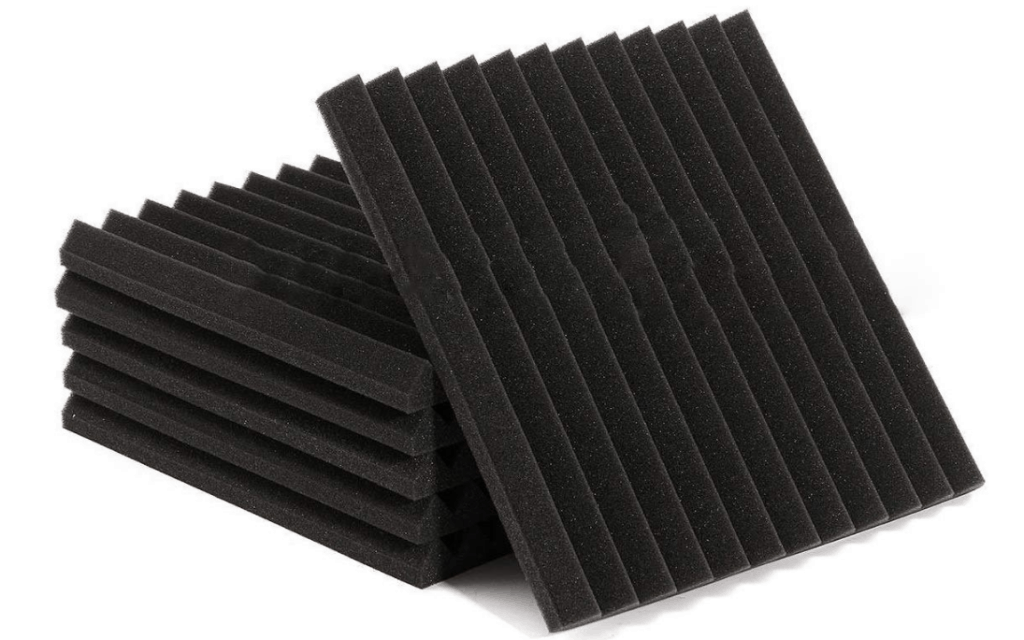Bathrooms echo more than any other room in a house. It echos and often sounds pleasant to the ear of those who have ever sung loudly in the shower. What’s the reason why bathrooms echo?
Bathrooms echo because of the hard surfaces that repel the noise. Tiles, glass, and other hard materials that don’t absorb sound cause the vibration of the notice to travel continuously, causing an echo effect.
However, the voice may not sound pleasant in any other room. We look at why bathrooms echo, especially in the shower.
Why Bathrooms Echo
To understand the echo, we must understand what material and substance bathrooms are built with.
Bathrooms are often made of hard surfaces. Typically the material on the walls is tile, which is not made for absorption but rather deflection.
If you have a bathroom mat or bathroom rug down, this will absorb the noise. There is a notable difference in sound when it’s removed.
The shower door is often made of glass, which, again, does not do a great job of absorbing sound. These two materials are easy to clean as it’s tough for dirty substances to stick and grab on.
The same can be said about sound. Bathroom echo because the material in the bathroom does not absorb sound, thus reflecting it to the person talking or singing.
When put into a small confined space with echo, it naturally sounds pleasing to the ear with the number of sound waves that enter it.
This is why singing in the shower is widespread, as we naturally sound better to our ears. In most cases, we’re just experiencing an echo of our voice.
Why Other Rooms Don’t Echo
Other rooms, such as a small living room or a kitchen, for instance, don’t carry the same echo as the bathroom for many reasons:
- These rooms tend to be larger than a shower. The more room, the farther away the sound waves get from the ear.
- The main reason is the material in the room is soft and absorbent. Carpet, drywall, and couches can be found in a typical living room. All of these materials are soft and absorbent to both sound and physical products.
The perfect example to demonstrate this is if you’ve ever seen a child bury his face into the couch and scream because they’re mad, the sound will go into the sofa – rather than echo throughout the entire room.
This is how absorbent furniture is and how it helps minimize noise.
Rooms like the living room or the kitchen often have drywall which is absorbent to sound. Although it may not seem absorbent because it’s a hard surface, it absorbs the sound better than tile.
As mentioned above, sounds that often echo requires rigid, sound-repelling walls and often small areas. These sound-repelling walls often include tiles within a shower or bathtub confined space.
More oversized bathrooms with more space often don’t echo as much, especially if they’re made primarily of drywall and not tile.
How To Minimize The Echo In Your Bathroom
A perfect example of minimizing the echo is noise cancellers easily placed on the walls or the curtain shades of windows. These noise cancellers significantly reduce the vibrations and absorb the noise throughout the room.
Noise cancelers are any item that can be placed on the wall that helps absorb noise, so your bathroom doesn’t echo. The most important aspect of the noise cancellers is the style and proper fit into the bathroom.
Sound-absorbing curtains, panels, or wedges can be placed on the exterior front-facing wall to absorb the noise. We recommend using the curtains or the sound panels that best absorb the sound for look purposes.
Below are our picks for the best sound-canceling and noise-absorbing products to help minimize the echo in a bathroom.
Sound Absorbing Curtains

Noise-reducing curtains are a great way to minimize the noise that comes into a bathroom or any room in the house. The elegant design offers two panels per package and can be found in almost any color.
These curtains are thicker than most, as they’re made from thermal insulated, soundproof, and fade-resistant material. These curtains are also machine washable and can be ironed at low temperatures.
Sound Panels

Sound panels are what daycares and schools use in noisy rooms to eliminate the roar of chatter.
These sound panels are often found in three colors: black, burgundy, and ivory. Hung up on the wall of your studio, living room, or basement where the kids play to reduce noise, sound panels are usually the more stylish way to block out the noise.
Foam Wedges

Last is the foam wedges. Foam wedges are more used for studios and places with consistent high-volume atmospheres.
Placed in the walls or outside the walls, foam panel wedges are great for soundproofing and absorbing high-range frequencies. They diminish echoes to maximize the quietness.
These may not be the best available option compared to the last two options; however, we wanted to include them on the list if the homeowner wanted to get creative in their bathroom.
Conclusion
Bathrooms and showers tend to echo based on the hard surfaces that repel the noise and sound waves. Tiles, glass, and other hard material that doesn’t absorb noise often cause a frequent bounce and vibration of the voice. This creates an echo and can be heard from several rooms over from the reflected sound.
To minimize the echo and keep a quiet and peaceful household, we recommend considering the noise reduction options above to keep the serenity in your home – especially if you have more than two children.
Drywall, although hard, is not great at absorbing sound or vibration. This is demonstrated by a child playing video games or hearing someone on the phone in the next room.
We’ve compiled a complete list of frequently asked bathroom questions for new and experienced homeowners.
Our team of experts answers these questions to help assist you through DIY projects and home repairs.

For over a decade, Robin has been a real estate agent, interior design specialist, and mother. Through her trials and tribulations, she wanted to create the perfect website to help you save money and make your home look beautiful.
